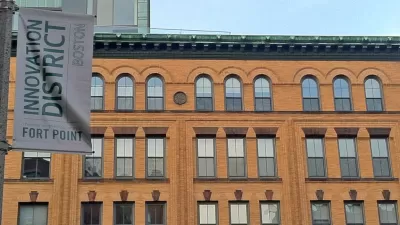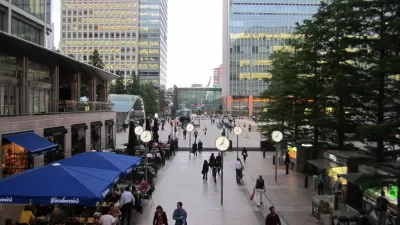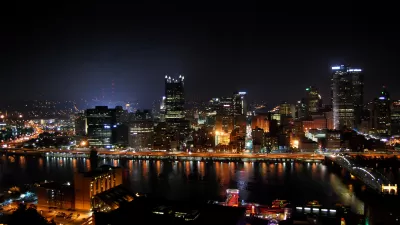Last year, the "innovation district" rose to prominence as a way to describe urban knowledge economy epicenters. This report from Bruce Katz and Brookings describes how the phenomenon continues to evolve.

Unlike the suburban office parks associated with tech firms, today's innovation district is central and urbane, boasting an equal spread of MacBook entrepreneurs and baristas. According to this article, there's not a lot to complain about. "The growing application of 'open innovation'—where companies work with other firms, inventors, and researchers to generate new ideas and bring them to market—has revalued proximity, density, and other attributes of cities."
The phenomenon has been quick to spread. "A simple Google search will reveal the extent to which the language of 'innovation districts' (or 'innovation quarters,' 'innovation neighborhoods,' or 'innovation corridors') has rapidly permeated the field of urban and metropolitan economic development and place-making.
Several observations from the article about how innovation districts are evolving:
- In some cases, the label "innovation district" has been misapplied by regions seeking to drive up demand and attract high-value enterprises.
- Innovation districts aren't necessarily yoked to existing knowledge centers, i.e. university campuses. This is a good thing.
- Some ostensible innovation centers need to become friendlier to networking. "When designed and programmed well, a district's public spaces facilitate open innovation by offering numerous opportunities to meet, network, and brainstorm [...] districts anchored by medical campuses have significant work ahead."
- Intermediaries (cultivators, incubators, accelerators) are becoming crucial enablers for collaboration between firms.
- Innovation districts must "ensure that nearby neighborhoods and their residents connect to and benefit from new growth opportunities in innovation districts and beyond. Scaling such efforts will be critical in the years to come, as the success of these districts will be defined in large part by their broader city and regional impacts."
FULL STORY: One year after: Observations on the rise of innovation districts

Alabama: Trump Terminates Settlements for Black Communities Harmed By Raw Sewage
Trump deemed the landmark civil rights agreement “illegal DEI and environmental justice policy.”

Planetizen Federal Action Tracker
A weekly monitor of how Trump’s orders and actions are impacting planners and planning in America.

The 120 Year Old Tiny Home Villages That Sheltered San Francisco’s Earthquake Refugees
More than a century ago, San Francisco mobilized to house thousands of residents displaced by the 1906 earthquake. Could their strategy offer a model for the present?

Ken Jennings Launches Transit Web Series
The Jeopardy champ wants you to ride public transit.

BLM To Rescind Public Lands Rule
The change will downgrade conservation, once again putting federal land at risk for mining and other extractive uses.

Indy Neighborhood Group Builds Temporary Multi-Use Path
Community members, aided in part by funding from the city, repurposed a vehicle lane to create a protected bike and pedestrian path for the summer season.
Urban Design for Planners 1: Software Tools
This six-course series explores essential urban design concepts using open source software and equips planners with the tools they need to participate fully in the urban design process.
Planning for Universal Design
Learn the tools for implementing Universal Design in planning regulations.
Clanton & Associates, Inc.
Jessamine County Fiscal Court
Institute for Housing and Urban Development Studies (IHS)
City of Grandview
Harvard GSD Executive Education
Toledo-Lucas County Plan Commissions
Salt Lake City
NYU Wagner Graduate School of Public Service




























